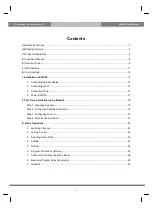
16
CONNECTIONS
2
1
3
1
2
10 mm (3/8”)
Connecting the Speakers
Be sure to connect the left channel (L), right channel (R), “+” (red) and “–” (black) properly. If the connections are
faulty, no sound will be heard from the speakers, and if the polarity of the speaker connections is incorrect, the sound
will be unnatural and lack bass.
CAUTION
• Use speakers with the specified impedance shown on the rear panel of this unit.
• Do not let the bare speaker wires touch each other and do not let them touch any metal part of this unit. This could
damage the unit and/or speakers.
If necessary, use the SET MENU to change the speaker mode settings according to the number and size of the speakers
in your configuration after you finish connecting your speakers.
■
Speaker cables
A speaker cord is actually a pair of insulated cables
running side by side. One of the cables is colored or
shaped differently, perhaps with a stripe, groove or ridge.
1
Remove approx. 10 mm (3/8”) of insulation
from each of the speaker cables.
2
Twist the exposed wires of the cable
together to prevent short circuits.
■
Connecting to the SPEAKERS terminals
1
Unscrew the knob.
2
Insert one bare wire into the hole in the side
of each terminal.
3
Tighten the knob to secure the wire.
y
(U.S.A., Canada, Australia, China and general models only)
• Banana plug connections are also possible. First, tighten the
knob and then insert the banana plug connector into the end of
the corresponding terminal.
Red: positive (+)
■
MAIN SPEAKERS terminals
One or two speaker systems can be connected to these terminals. If you use only one speaker system, connect it to either
of the MAIN A or B terminals.
■
REAR SPEAKERS terminals
A rear speaker system can be connected to these terminals.
■
CENTER SPEAKER terminals
A center speaker can be connected to these terminals.
Black: negative (–)
0103V1000_11-18_EN
8/29/0, 1:33 PM
16
















































